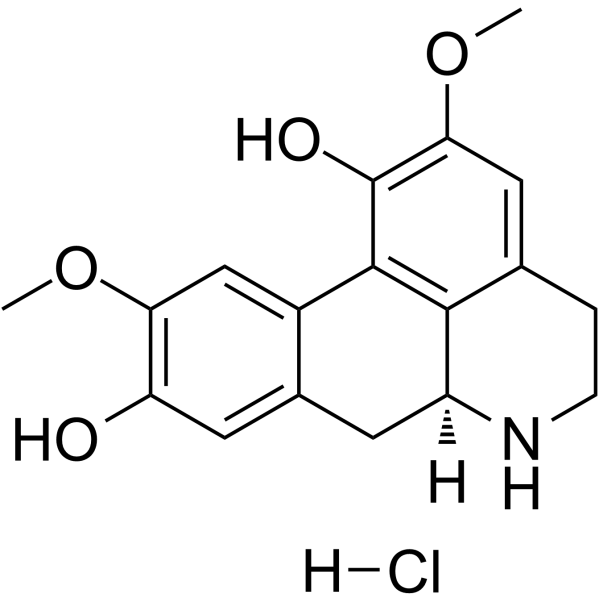5083-84-1
| Name | Norisoboldine hydrochloride |
|---|
| Description | Norisoboldine hydrochloride is an orally active natural aryl hydrocarbon receptor (AhR) agonist. Norisoboldine hydrochloride, as a major isoquinoline alkaloid present in Radix Linderae, can be used for the research of Rheumatoid arthritis and Ulcerative colitis[1][2]. |
|---|---|
| Related Catalog | |
| Target |
AhR[2] |
| In Vitro | Norisoboldine hydrochloride (1~30 μM; 0~24 hours; CD4+T cells) activates AhR under hypoxic microenvironment and significantly downregulates mRNA expression of miR-31[2]. Norisoboldine hydrochloride (30 μM; 0~24 hours; CD4+T cells) inhibits glycolysis in hypoxia[2]. Norisoboldine hydrochloride (1~30 μM; 0~72 hours; Treg cells) promotes Treg differentiation in hypoxia[2]. Norisoboldine hydrochloride (10, 30 μM) facilitates the disassociation of HSP90/AhR complexes, the nuclear translocation of AhR, and the formation of AhR/ARNT complexes. Norisoboldine hydrochloride induces generation of Treg cells in hypoxia[2]. Western Blot Analysis[2] Cell Line: CD4+T cells Concentration: 1~30 μM Incubation Time: 24 hours Result: Activated AhR in cells under hypoxic microenvironment. RT-PCR[2] Cell Line: CD4+T cells Concentration: 1~30 μM Incubation Time: 24 hours Result: Significantly downregulated mRNA expression of miR-31. Immunofluorescence[2] Cell Line: CD4+T cells Concentration: 30 μM Incubation Time: 24 hours Result: Inhibited glycolysis in hypoxia. Immunofluorescence[2] Cell Line: Treg cells Concentration: 1~30 μM Incubation Time: 72 hours Result: Promoted Treg differentiation in hypoxia. |
| In Vivo | Norisoboldine hydrochloride (10~40 mg/kg; p.o.; 20 days) significantly reduces the severity of joint swelling and erythema during the course of the experiment[1]. Norisoboldine hydrochloride (40 mg/kg; i.g.; 10 days) induces enhancement of CYP1A1 expression and suppresses expressions of Glut1 and HK2 in colons[2]. Animal Model: Male ICR mice (18–22 g) Dosage: 10~40 mg/kg Administration: P.o. Result: Significantly reduced the severity of joint swelling and erythema during the course of the experiment. Animal Model: Female C57BL/6 mice (18–22 g) Dosage: 40 mg/kg Administration: I.g. Result: Induced enhancement of CYP1A1 expression and suppressed expressions of Glut1 and HK2 in colons. |
| References |
| Molecular Formula | C18H20ClNO4 |
|---|---|
| Molecular Weight | 349.81 |
